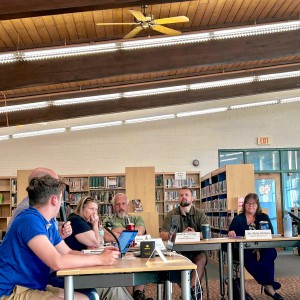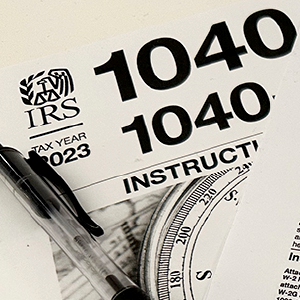Weare annual meeting: Lowest paid staff in line for raises
| Published: 01-12-2023 3:25 PM |
Increasing wages for school support staff known as paraeducators is one of the focal points of the Weare school district this year.
Weare voters will be asked to approve a new contract with paraeducators and a proposed school budget of $18.3 million. Weare’s 2023 school warrant will be a short one this year, with just the two big cost items for voters to consider.
The paraeducator contract, which primarily increases wages for one of the lowest paying positions in any school system, includes an estimated increase of $193,208 for salaries for the 2023-2024 school year, and an additional increase of $39,298 on top of that for 2024-2025. For Para II positions – the certification level of most paraeducators in Weare – the pay ranges from $14.91 per hour in their first year to $21.73 by their 20th year in the district. With the new bargaining agreement, they would be paid higher on a shorter pay scale, ranging from $16 in year one to $22.50 in year 11. It also adds some incentives for paras working more than 10 years in the district by increasing the longevity payment from $650-$1,600 and $1,000-$3,000, and adding a sick leave buyback option.
Although Weare paraeducators don’t receive healthcare or retirement benefits, this year’s negotiations focused on raising their hourly wage.
“Going into the negotiation, I think we fully anticipated we'd be talking about healthcare,” said Superintendent Jacqueline Coe said. “Anticipating that, we were surprised. We went through negotiations and determined together that the focus really needed to be on our wages.”
Weare, like most districts, has struggled to fill paraeducator positions for the past several years. The shortage is a problem statewide, as many paras say the low wages and lack of benefits aren’t worth it, considering the training, skill and workload involved with the position. Currently, Weare has nine vacant paraeducator positions out of 50 – a vacancy rate of 18%.
During the public comment period, Weare resident Jeff Anderson said it’s important that the district take steps like raising the salary to help fill those positions, since paraeducator staffing ratios are needed to meet student special education needs, as mandated by law.
“If I was an owner of a small business and I had an 18% reduction I'd do a lot of things, including the increase in pay,” Anderson said. “If we're running 18%, we're showing we can't hire people at our current pay rate.”
Article continues after...
Yesterday's Most Read Articles
 Neighboring landowner objection stalls Steeplegate redevelopment approval
Neighboring landowner objection stalls Steeplegate redevelopment approval
 How has Hopkinton, one of the smallest public schools in New Hampshire, become such a lacrosse powerhouse?
How has Hopkinton, one of the smallest public schools in New Hampshire, become such a lacrosse powerhouse?
 Northeast Coffee Festival comes to Concord this weekend
Northeast Coffee Festival comes to Concord this weekend
 Rock ’N Race draws 3,250 participants, still has further to go to meet fundraising goal
Rock ’N Race draws 3,250 participants, still has further to go to meet fundraising goal
 Steeplegate project to reopen to public comment as developer seeks to reduce required parking
Steeplegate project to reopen to public comment as developer seeks to reduce required parking
 High schools: Concord girls’ 4x100-meter relay sets school record at Merrimack Invite, plus more track, baseball, lax and tennis results
High schools: Concord girls’ 4x100-meter relay sets school record at Merrimack Invite, plus more track, baseball, lax and tennis results
The proposed school operating budget for 2023-2024 is $18.34 million, a 2.75% increase over this year’s budget of $17.85. It is estimated that this would raise the tax rate by $1.01 per $1,000 of assessed valuation. For a house valued at $350,000, this would represent a $353 increase.
If voters reject the proposed school budget in the polls, a default budget of $18.29 million would go into effect.
Contributing to the proposed school budget’s increase of $490,399 is a boost in other salaries, which are going up by $57,814 this year. The district is proposing to cut two teaching positions, which are currently unfilled. Special education costs are going up by $464,918, mainly because the district contracts out for various services, including speech-language pathology, behavior consultants and nursing. Weare has 205 students who receive special education services.
Other proposed cost increases include $175,000 for information technology, $94,910 for special education transportation and $82,848 for repair and maintenance, including heating repairs and general building maintenance.
According to assistant su perintendent Natasha Kolehmainen, Weare School District has received $$1,421,577 in four rounds of federal COVID grant funding over the last three years. The first year, the funds went mainly to cleaning supplies, protective equipment, facility improvements and remote learning costs like computer devices, Kolehmainen said. Last year it was used mainly for social-emotional learning. This year it’s being used for mental health support, professional development and curriculum resources and hiring a program coach, and next year they’re planning to use it for classroom training, enhanced summer programming and the coach’s second year.
During the public comment period, Weare resident Frank Campana said he hopes the school district will not use the federal grants for long-term programs, which will end up needing taxpayer support in the budget after the funding runs out. Coe answered that the district tries to be cautious about using the grants for things – such as a one-time payment for a curriculum resource – that wouldn’t put a big burden in the budget down the road.
Wednesday’s budget hearing was the first step in the annual school district meeting process for Weare, which is an SB2 town. Next up is a deliberative session in February when voters can debate and modify the budget and warrant articles before voting by ballot on New Hampshire’s town Election Day, March 14.
Weare’s school deliberative session take place Feb. 8 at 7 p.m. in the Weare Middle School cafeteria at 16 East Road. The School Board meeting will start at 6 p.m. and recess for the session.


 Adam Montgomery sentenced to minimum 56 years on murder charges in young daughter’s death
Adam Montgomery sentenced to minimum 56 years on murder charges in young daughter’s death Following budget cut, Pembroke revisits future of elementary school re-build
Following budget cut, Pembroke revisits future of elementary school re-build Granite Geek: Free government software for taxes – what could go wrong? (Not much, as it turns out)
Granite Geek: Free government software for taxes – what could go wrong? (Not much, as it turns out)
